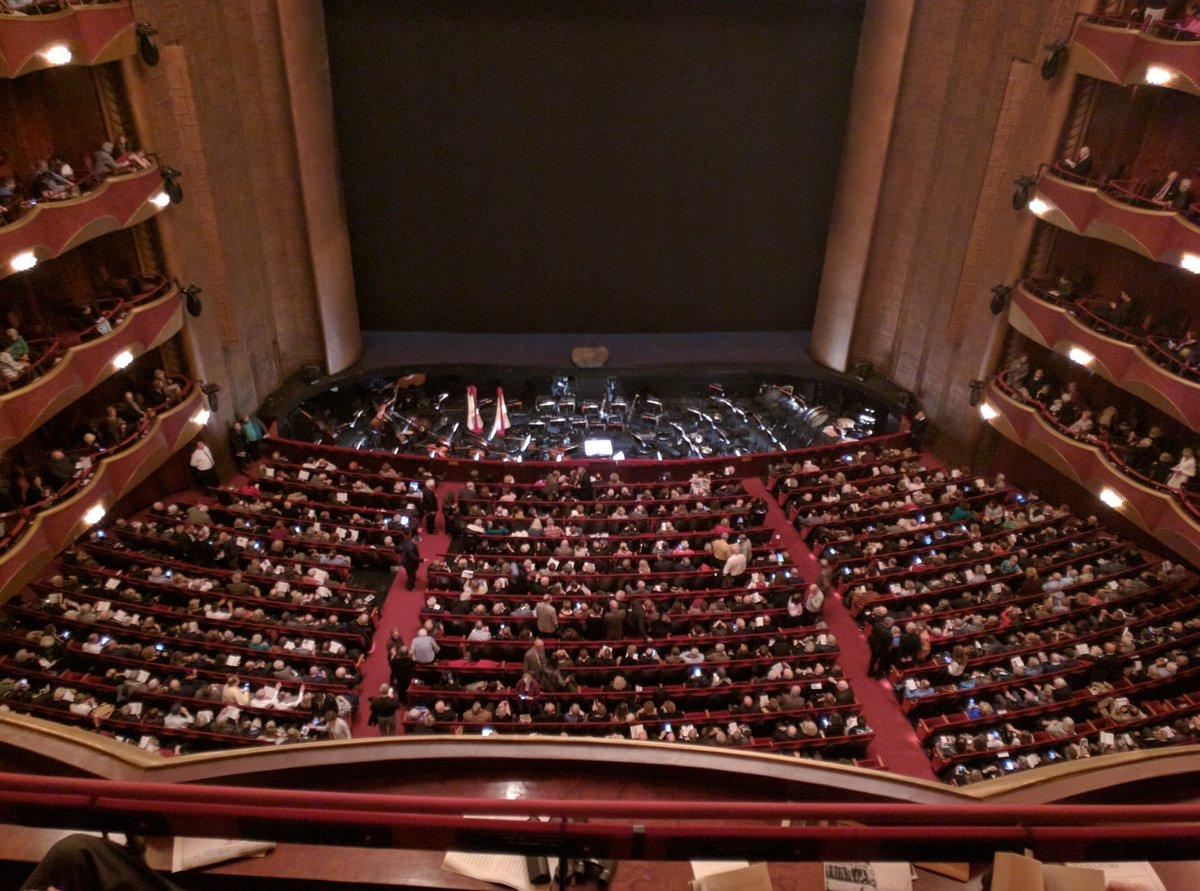
At its beginning, the opera house featured almost exclusively European artists and composers-dominated Wagnerian and other German operas-but as it grew, it showcased many distinguished Americans. The Metropolitan Opera House, owned and administered by the Metropolitan Opera Association, Inc., opened on October 22, 1883, with a performance of Gounod’s Faust, featuring Christine Nilsson and Italo Campanini. The interior of the Metropolitan Opera House, with the "Golden Horseshoe" partially visible. As such, consistent efforts to start construction of a new opera house were commonplace until the mid-twentieth century. The architect, Josiah Cleveland Cady, had never designed a theater (and even boasted that he had “never entered a playhouse”), and therefore, the opera house’s structure, while impressive, had several functional faults and was considered antiquated even at its opening.


Nicknamed “The Warehouse,” the yellow-brick façade was in the Italian Renaissance style with Romanesque panels. The two tiers of boxes and a row of baignoires, together called the “Golden Horseshoe,” contributed to this sense of classed, social display-this section sat 210 people, including the high-profile Vanderbilts, Morgans, Goulds, and the other original seventy stockholders, and visually and physically separated them from the standees. Structurally, the five balconies and main floor, with box seating and space for 380 standees, was imposing. As a result, the opera house was visually representative of the needs of a rising upper class. It was much larger-its five-balcony auditorium could house 3389 people-and its design spoke to postbellum American attempts to bypass the standards of European artists.

The Metropolitan Opera House, built in the early 1880s, addressed these concerns. In the years following the Civil War, the “new moneyed” aristocracy began to feel that the old, 1850s-era Academy of Music no longer met the necessities of New York high society. The Metropolitan Opera House, also known as the “Old Met,” was a large opera house on Broadway in New York City. NPS Photo / Historic American Buildings Survey, Library of Congress


 0 kommentar(er)
0 kommentar(er)
